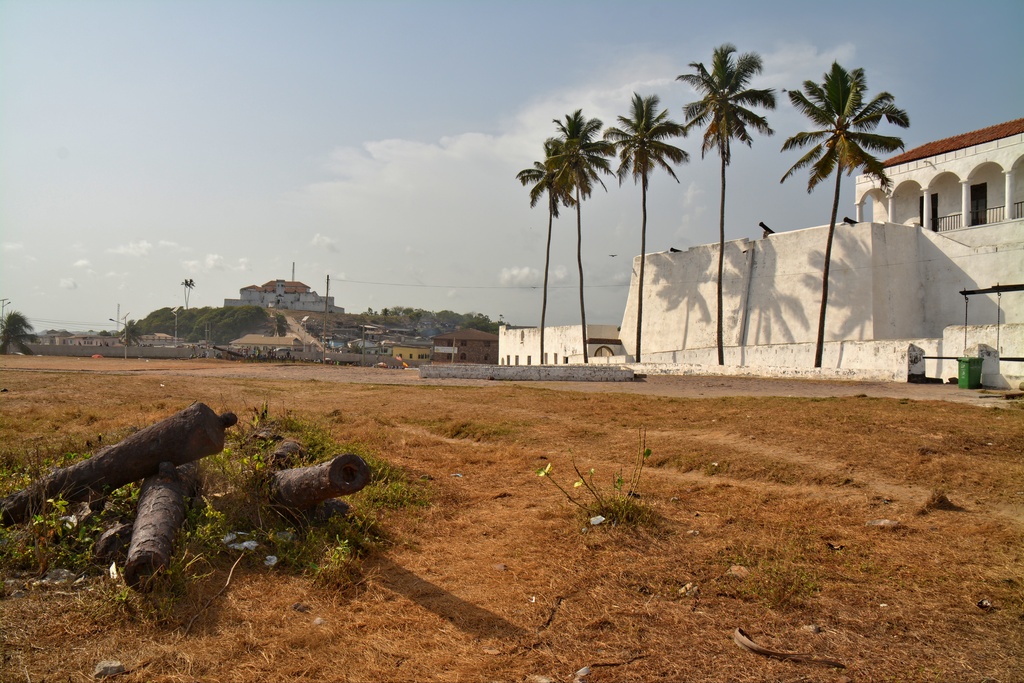
In 1637 the fort was taken over by the Dutch, who made it the capital of the Dutch Gold Coast.
In 1637, the Dutch captured St. George’s Castle in Elmina from the Portuguese after a successful military campaign. The key to their victory was the use of St. Jago Hill, a strategic elevation overlooking the castle. From this position, Dutch forces launched artillery bombardments, forcing the Portuguese into surrender. Following their takeover, the Dutch made Elmina the capital of the Dutch Gold Coast, marking the beginning of more than two centuries of Dutch presence in the region.
Advertisement

(c) Remo Kurka - Dutch Fort overlooking Elmina Castle
Recognizing the vulnerability of St. George’s Castle to attacks from the high ground, the Dutch quickly moved to secure their position. In 1666, they built a new fortress on St. Jago Hill to prevent enemies from using the same tactic against them.
This fort, known as Fort Coenraadsburg, served a purely military function. It contained barracks and officer quarters but no commercial storage or trade facilities. Its primary role was to defend Elmina and the castle from inland threats.
During Dutch control, Elmina remained a key node in the transatlantic slave trade. Enslaved Africans were brought to the castle, held in dungeons, and then shipped across the Atlantic as part of the triangular trade connecting Europe, Africa, and the Americas. This continued until 1814, when the Netherlands officially abolished the slave trade in accordance with the Anglo-Dutch Treaty of 1814, part of a wider European movement to end the practice.
In 1872, under the terms of the Anglo-Dutch Treaties of 1871—commonly known as the Sumatra Treaties—the Dutch formally ceded all their territories on the Gold Coast, including Elmina, to the British. In return, the Dutch received full control over their interests in Sumatra, in present-day Indonesia. This marked the end of Dutch colonial involvement in West Africa.
While Elmina had served as the capital under Dutch rule, the British established their colonial capital in nearby Cape Coast. Cape Coast then became the center of administration and commerce in what was known as the British Gold Coast, playing a major role in the colonial history that
Advertisement